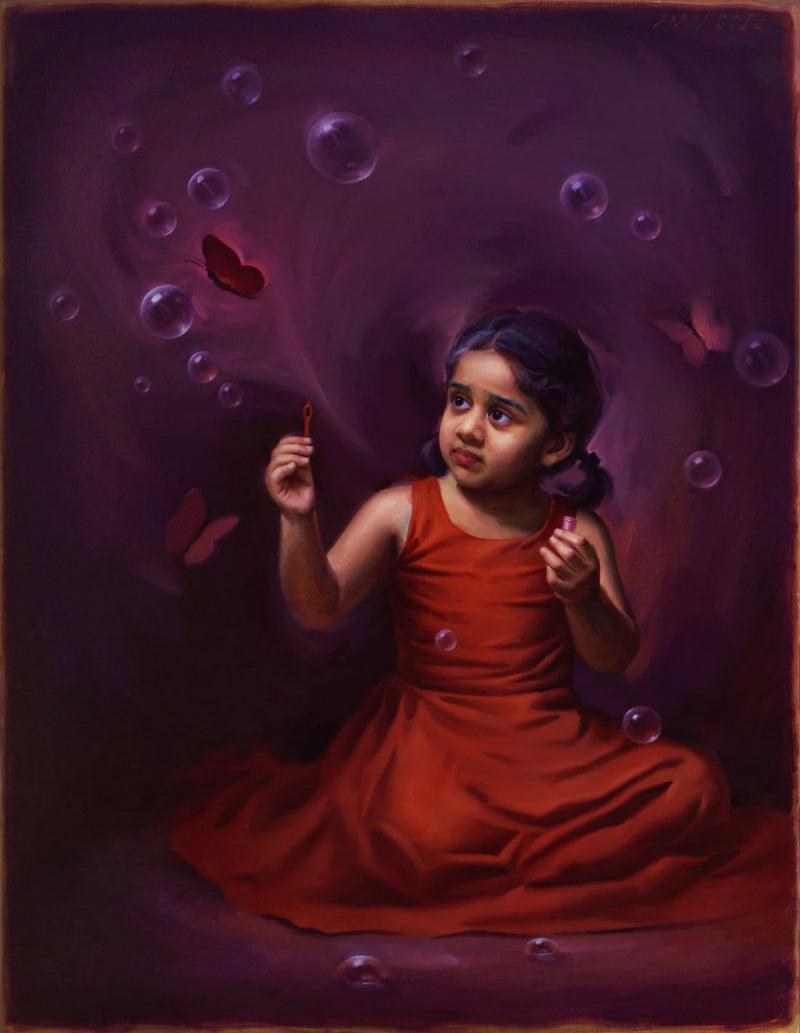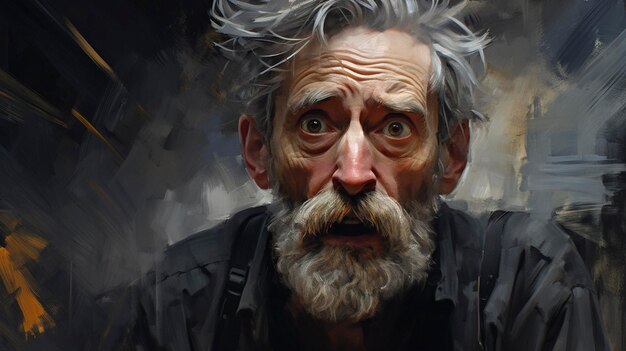How Figurative Oil Painting Changes Conventional Artistic Expression
How Figurative Oil Painting Changes Conventional Artistic Expression
Blog Article
The Advancement of Figurative Oil Painting: Comprehending Its Historical Importance and Modern Interpretations
The development of figurative oil painting offers as a compelling lens through which to take a look at the interaction between artistic expression and historic context. Contemporary musicians, drawing from this abundant heritage, are currently reinterpreting the human figure in means that test conventional stories.
Beginnings of Metaphorical Oil Paint
The origins of figurative oil paint can be mapped back to the very early Renaissance in Europe, especially in the 15th century. This period marked a considerable departure from the inflexible kinds and flat depictions characteristic of medieval art. Artists began to explore naturalism, highlighting the human number and its psychological expression. The advancement of oil paint enabled higher depth of color and information, boosting the realistic look and vibrancy of their job.

In this transformative age, numbers were frequently shown within contextually rich settings, showcasing not only their physical characteristics yet also their emotional states. Leaders such as Jan van Eyck and Titian took advantage of the tool's versatility, using layering strategies to accomplish luminance and structure. This innovation helped with the portrayal of detailed materials and the subtleties of complexion, adding to the development of portraiture and narrative scenes.
Moreover, the Renaissance focus on humanism fostered a recognition for individualism, which in turn influenced artists to create more relatable and vibrant numbers - figurative oil painting. As a result, metaphorical oil painting became a powerful automobile for storytelling and psychological engagement, laying the foundation for future artistic motions and designs
Trick Historical Motions
Significant historical activities have shaped the evolution of figurative oil painting, each adding distinct ideologies and techniques that increased the tool's opportunities. The Renaissance noted a zero hour, stressing realistic look and the human kind, with artists like Leonardo da Vinci and Michelangelo pushing the limits of physiological precision and perspective. Following this, the Baroque era brought dramatic contrasts of light and shadow, exhibited by Caravaggio, who instilled religious styles with intense emotionality.
The 19th century presented Romanticism and Realistic look, where musicians such as Delacroix and Courbet tested timeless ideals, concentrating on individual expression and day-to-day life. The development of Impressionism even more changed the medium by highlighting the effects of light and shade, bring about a separation from standard representation.
In the very early 20th century, movements like Expressionism and Cubism redefined figurative paint via abstraction and the expedition of psychological depth. Each of these motions not only showed the societal adjustments of their times however additionally laid the foundation for contemporary interpretations. The interaction in between these historical motions has developed an abundant tapestry of approaches and styles, influencing contemporary musicians in their quest of capturing the human experience on canvas.
Strategies and Products Development

Throughout the Baroque duration, techniques such as chiaroscuro and sfumato emerged, enhancing the emotional vibration of metaphorical structures. Artists started to trying out glazes and impasto, controling texture and brightness. By the 19th century, innovations like making use of pre-mixed paints in tubes revolutionized access, permitting musicians to repaint en plein air and catch the short lived results of light.
The 20th century experienced the introduction of artificial pigments and tools, which increased the scheme and altered the uniformity of oil paints. Moreover, the expedition of brand-new application strategies, such as scheme blades and brushes of varying tightness, further varied imaginative expression. Collectively, these improvements show the advice progressing connection in between products, strategies, and the creative vision intrinsic in metaphorical oil paint.

Contemporary Interpretations
Contemporary interpretations of metaphorical oil painting reflect a vibrant discussion in between custom and technology, where artists test developed standards and check out diverse styles. This advancement manifests in numerous ways, as contemporary artists blend classic methods with contemporary concepts, commonly attending to social, political, and individual narratives.
Lots of professionals draw ideas from historic jobs, yet they infuse their pieces with modern viewpoints, utilizing the human kind as a more tips here lorry for discourse on culture, gender, and identity. Artists significantly experiment with abstraction, distortion, and multimedias, which enables a wider interpretation of the figure and its context.
Additionally, using dazzling color palettes and non-traditional structures frequently serves to interfere with standard checking out experiences, provoking important engagement from target markets. This change in focus extends past visual appeals; it reflects an expanding awareness of the complexities of human experience in an interconnected globe.
As metaphorical oil painting proceeds to develop, it remains a vital medium for checking out the subtleties of modern life, symbolizing both a respect for heritage and a dedication to modern thought. The result is a rich tapestry of expression that resonates with the intricacies of the modern human problem.
Influence On Modern Art
The influence of figurative oil paint on modern-day art is extensive, as it has constantly inspired a myriad of imaginative activities and practices throughout the 21st and 20th centuries. From Expressionism to Surrealism and past, the expedition of the human number has actually stayed a main style, permitting artists to communicate complex emotions and stories. This emphasis on figurative depiction has brought about a re-examination of typical techniques, leading to ingenious methods that blend realistic look with abstraction.
Moreover, contemporary artists have actually embraced metaphorical oil painting as a way to resolve political and social concerns, making use of the medium to test understandings of identification, culture, and sex. The resurgence of passion in metaphorical job in recent years mirrors a wishing for connection in an increasingly electronic globe, where human experience and emotion are paramount.
Additionally, the discussion in between figurative oil painting and contemporary art appears in the works of artists such as Kehinde Wiley and Jenny Saville, who draw on historical references while infusing their items with modern significance. Eventually, figurative oil other painting proceeds to form and redefine contemporary artistic expression, emphasizing its long-lasting importance in the art world.
Verdict
The development of metaphorical oil paint highlights its historic value and versatility throughout different imaginative movements. From the naturalism of the Renaissance to the emotive expressions of the Baroque and the ingenious strategies of modernity, this tool has constantly changed. Contemporary analyses mirror vivid colors and unusual structures, fostering vital interaction with political and social motifs. Ultimately, metaphorical oil painting remains an essential tool for checking out the human experience, reverberating profoundly in today's electronic landscape.
The evolution of metaphorical oil paint serves as an engaging lens via which to take a look at the interaction in between imaginative expression and historic context.Substantial historic activities have shaped the development of metaphorical oil paint, each contributing one-of-a-kind ideologies and strategies that increased the tool's opportunities.As historical motions shaped the trajectory of figurative oil painting, the materials and techniques utilized by musicians have actually also undertaken substantial transformations. figurative oil painting.The influence of figurative oil paint on modern-day art is extensive, as it has actually continuously inspired a myriad of creative movements and techniques throughout the 20th and 21st centuries.The advancement of figurative oil paint highlights its historical importance and flexibility throughout numerous creative motions
Report this page